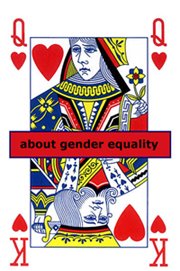
Gender equality policies in Europe have developed into a configuration of very different policies across countries. One of the most debated differences concerns strategies such as antidiscrimination, positive action or affirmative action, and gender mainstreaming, the last of which has been developed since 1995. In this dynamic field many femocrats, feminist scholars and feminist activists are debating the strengths and weaknesses of these diverse strategies and conceptualizing the relationships among them.
While these debates are highly significant for theory and practice, the current attention to strategies – how to reach the goal of gender equality – obscures another question at least as important: what is gender equality? This is the leading question in the MAGEEQ (an acronym of MAinstreaming GEnder EQuality) project, presented in this article. MAGEEQ does not ask the question in a normative sense, trying to give a definitive answer by giving arguments for what it should be. Rather, MAGEEQ analyzes current European policy realities and asks, what is meant when gender equality or similar concepts are used? What is the meaning of ‘gender equality' in these policies?
There is good reason to expect to find a large variety of meanings in gender equality policy practices. This can be caused by differences in feminist positions, such as the well-documented equality-difference opposition, but also by differences in context across European countries. The multitude of languages in Europe makes this variety less visible when studying the academic literature or ‘exported' texts in English about country specific policies as it obscures ‘local' concepts such as emancipatie (literally emancipation, Netherlands), gleichstellung (literally equalization, German), or promocion de la mujer (literally promotion of women, Spain). Similarly, we can find references to various concepts such as women's politics, gender discrimination, equality of the sexes, and women's rights. Although the label is not always a good indicator of its meaning, the variety of labels and concepts indicates very dissimilar histories and grounding of gender equality policies.
A second reason to study the meaning of gender equality in practice is that, under conditions of increasing Europeanization, it can be expected that discrepancies and inconsistencies in the meaning of gender equality will necessarily hinder or endanger implementation of European policies. Ute Behning and Serrano Pascual (2001), in their study of gender mainstreaming in employment in twelve west European countries, find differences in national paths pursued towards the goal of gender equality. They conclude that most policies presented as examples of implementation of the European Union strategy of gender mainstreaming are simply a continuation of previous policies.
See full Article.



